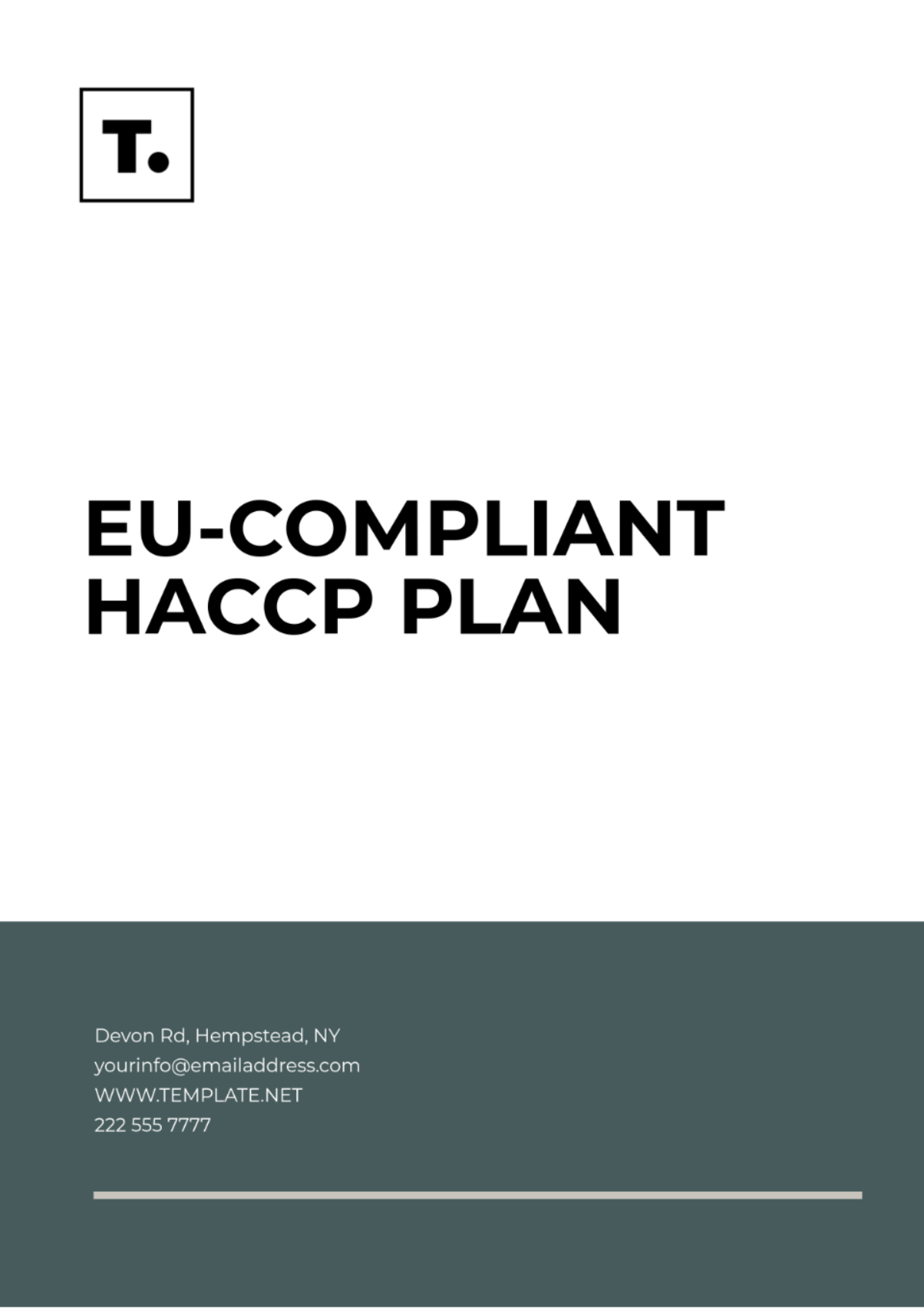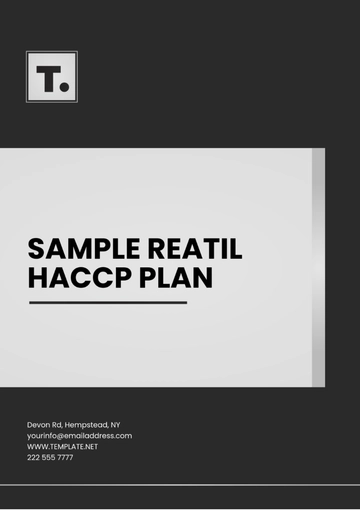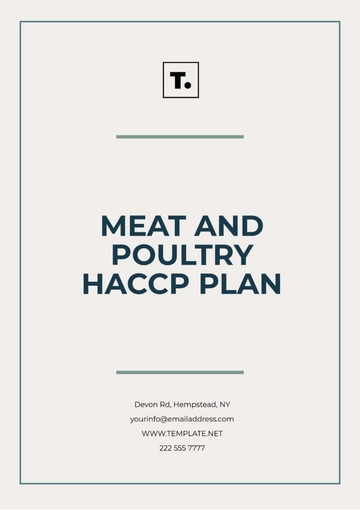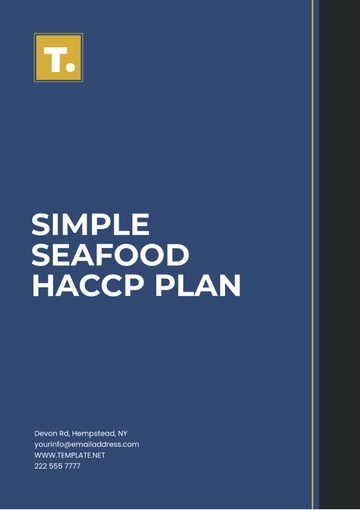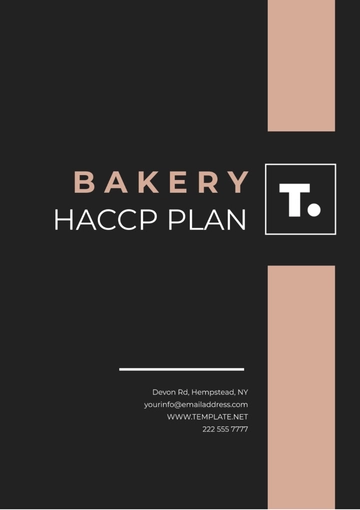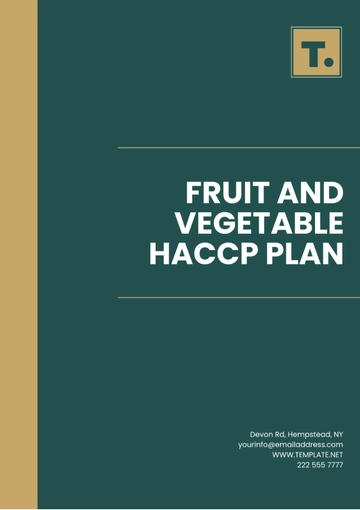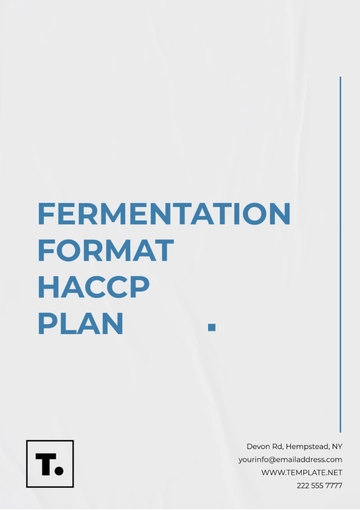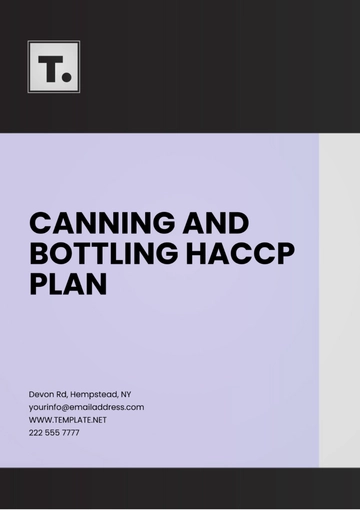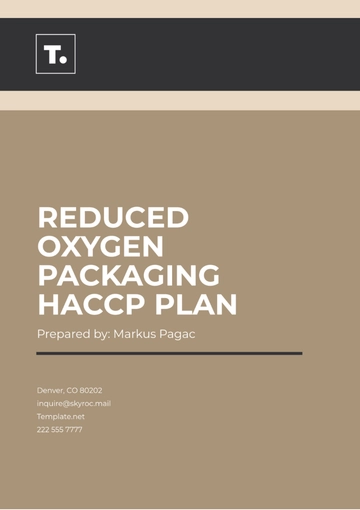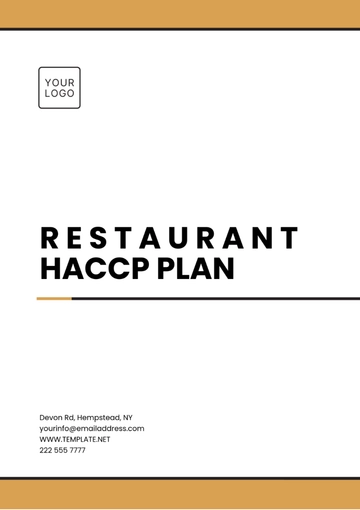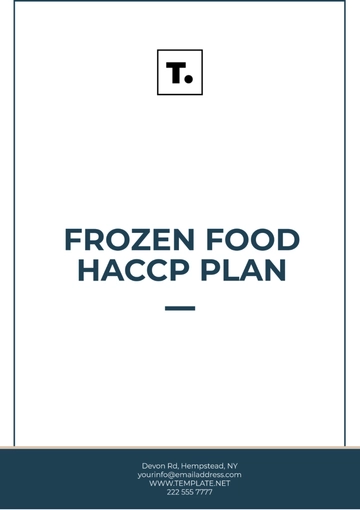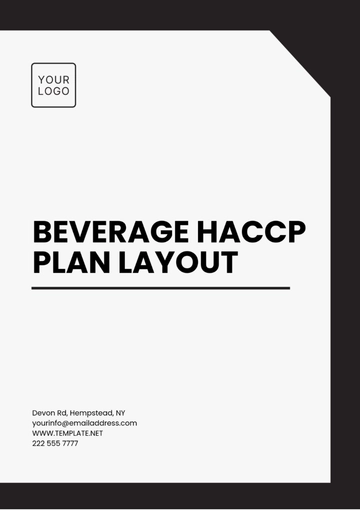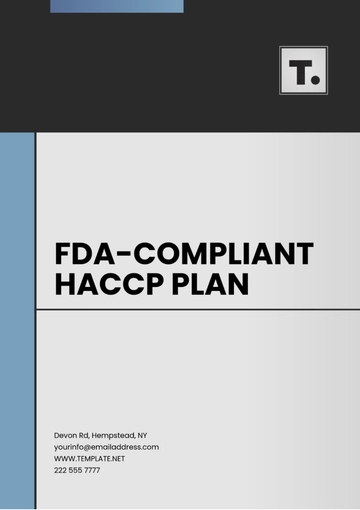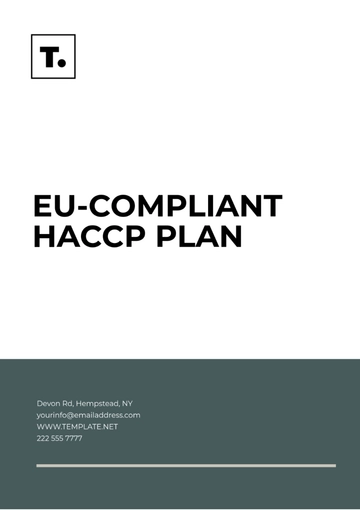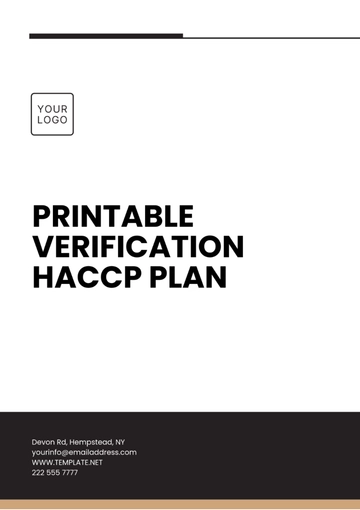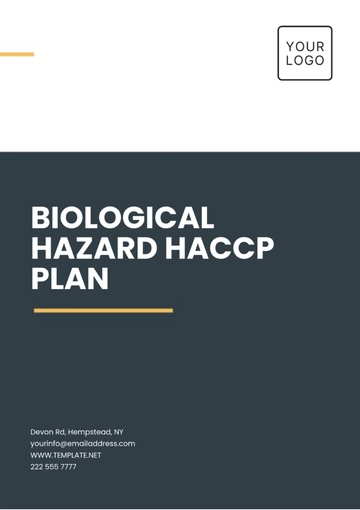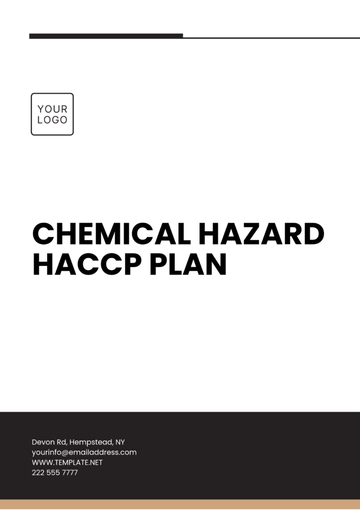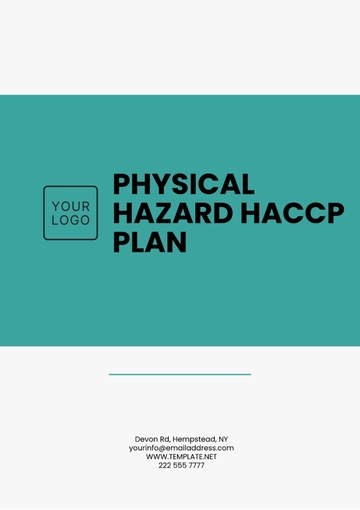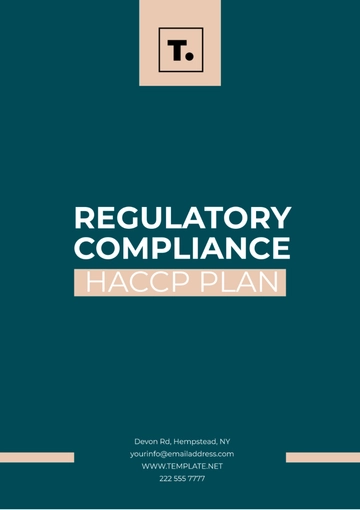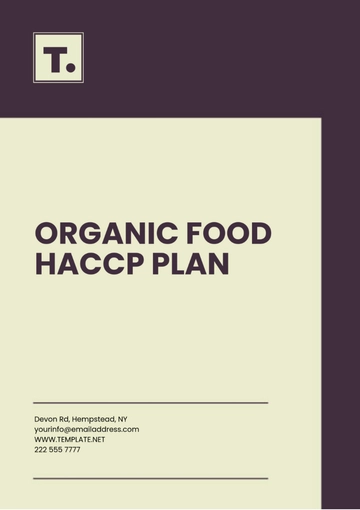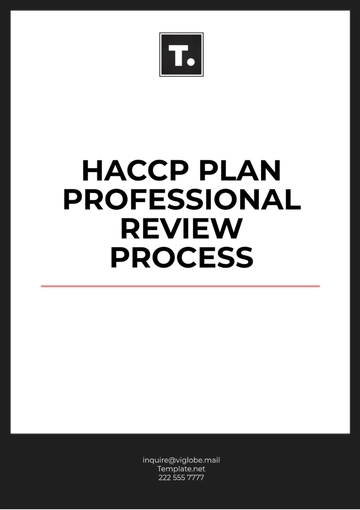EU-Compliant HACCP Plan
Date: September 10, 2060
Prepared by: [YOUR NAME]
I. Introduction
This HACCP Plan outlines the procedures and protocols implemented by [YOUR COMPANY NAME] to ensure the highest standards of food safety and compliance with European Union regulations. The primary objective of this plan is to identify, evaluate, and control food safety hazards at every stage of our food production process, ensuring that all products delivered to our customers are safe for consumption.
II. Food Safety Team
Team Members:
III. Product Description
Product Name: Organic Spinach and Quinoa Salad
Ingredients:
Fresh organic spinach
Cooked quinoa
Cherry tomatoes
Cucumber
Feta cheese
Olive oil
Lemon juice
Salt and pepper
Intended Use: A ready-to-eat salad intended for consumers seeking healthy meal options.
Target Consumer: Health-conscious individuals, including vegetarians and vegans, aged 18-45.
IV. Process Flow Diagram
Receiving Ingredients
Inspect shipments of spinach, quinoa, tomatoes, cucumber, feta, olive oil, lemon juice, salt, and pepper.
Verify suppliers’ certificates and check ingredient freshness.
Storage
Store fresh ingredients below 5°C in refrigerated units.
Keep dry ingredients in a clean, dry area away from contaminants.
Preparation
Wash spinach, tomatoes, and cucumber thoroughly.
Chop cucumber and halve tomatoes.
Measure olive oil, lemon juice, salt, and pepper for dressing.
Cooking (if applicable)
Cooling
Packaging
Combine all ingredients in appropriate portions.
Add dressing and mix gently.
Package in food-safe, airtight containers.
Distribution
Customer
V. Hazard Analysis
Step | Potential Hazard | Severity (1-5) | Likelihood (1-5) | Risk (Severity x Likelihood) |
|---|
1. Receiving Ingredients | Biological (pathogens) | 4 | 3 | 12 |
2. Storage | Chemical (pesticides) | 3 | 2 | 6 |
3. Preparation | Physical (foreign objects) | 4 | 2 | 8 |
4. Cooking | Biological (undercooking) | 5 | 2 | 10 |
5. Cooling | Biological (bacterial growth) | 4 | 3 | 12 |
VI. Critical Control Points (CCPs)
CCP | Description | Critical Limits | Monitoring Procedures | Corrective Actions |
|---|
CCP 1 | Cooking | Minimum internal temperature of 75°C for 2 minutes | Check temperatures with a calibrated thermometer every 30 minutes while cooking. | Re-cook until the required temperature is reached; discard if unable. |
CCP 2 | Cooling | Temperature below 5°C within 2 hours | Record temperatures every 30 minutes during cooling. | Discard products not cooling within the specified time and temperature. |
VII. Monitoring Procedures
VIII. Corrective Actions
IX. Verification Procedures
Regular internal audits are conducted quarterly by the Quality Assurance Manager.
Review of monitoring records during monthly team meetings.
Calibration of measuring equipment every six months to ensure accuracy.
Periodic refresher training for staff on HACCP principles and practices.
X. Record Keeping
Keep temperature logs and inspection checklists for at least three years.
Corrective actions were taken, with details of the incident and resolution.
Training sessions conducted for staff, including dates and attendees.
Audit reports and review findings to ensure continuous improvement.
Plan Templates @ Template.net
